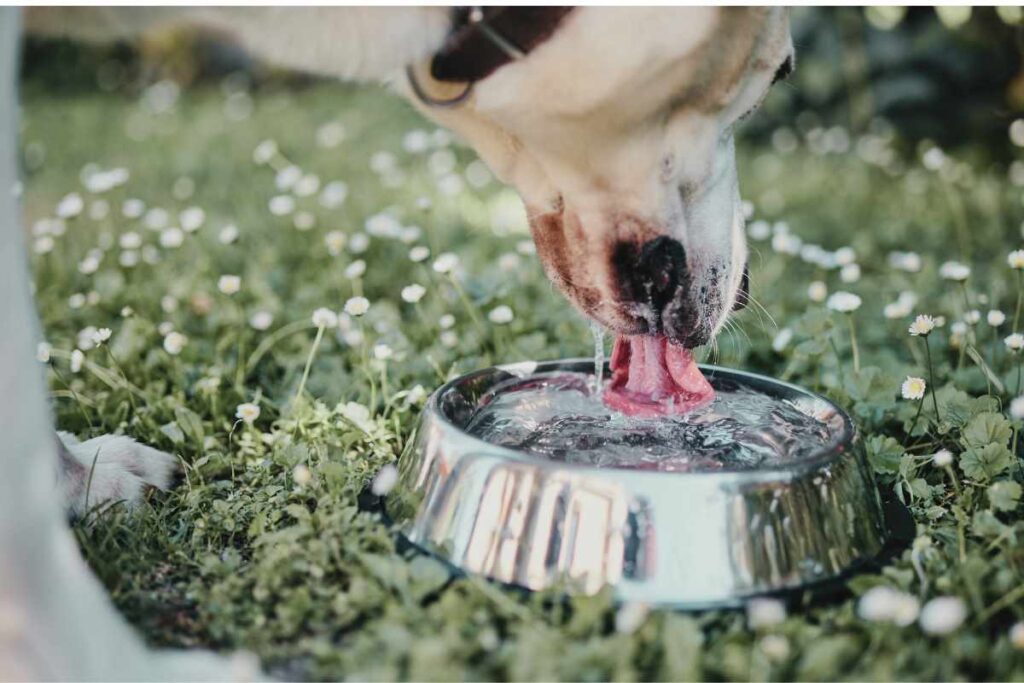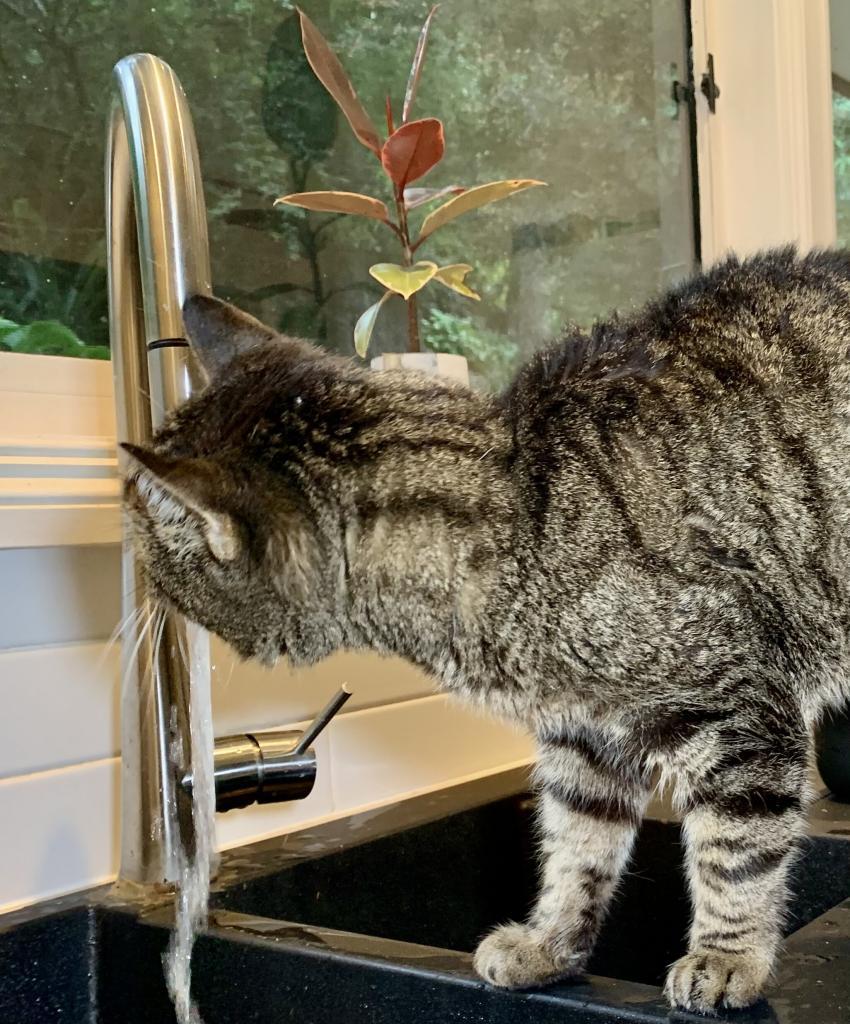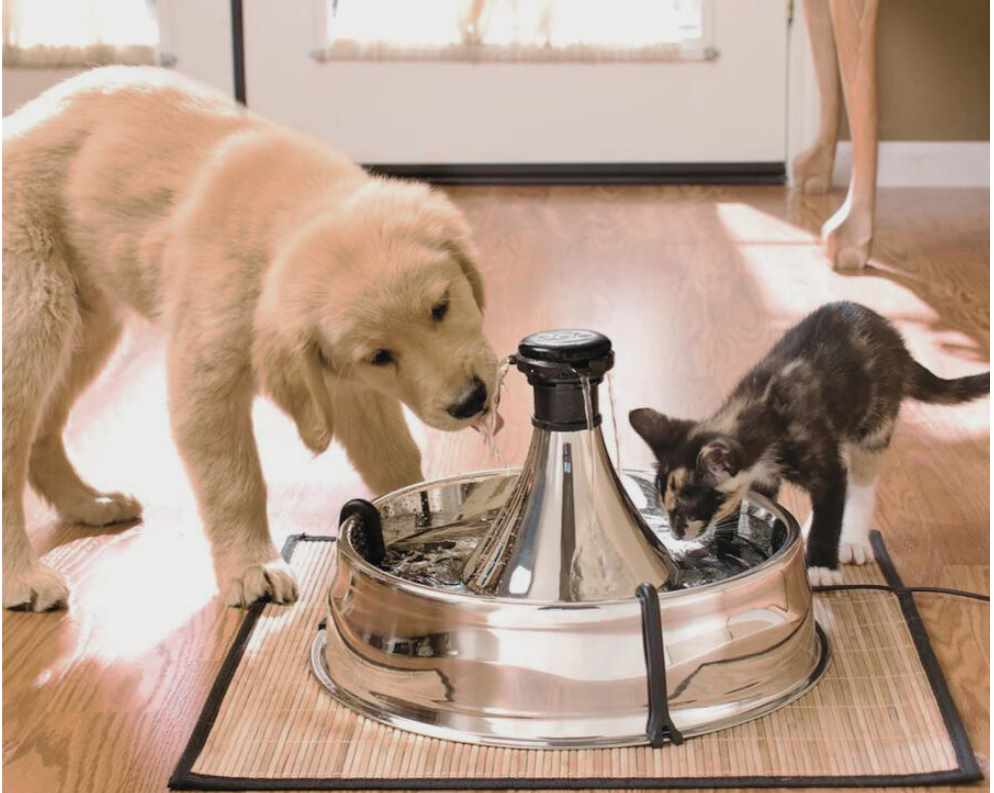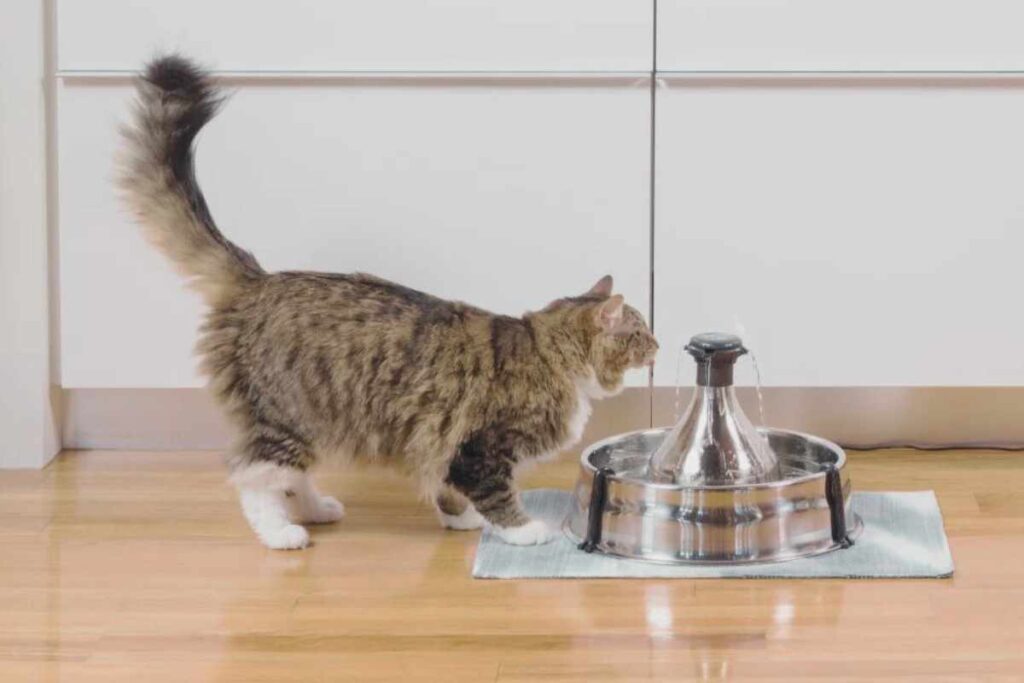

Estimated reading time: 1 minute
Pet hydration awareness
A survey of dog and cat owners reveals many of us don’t know enough about adequate pet hydration.
With some parts of the country still experiencing very high temperatures, a leading Australian pet brand is urging all dog and cat owners to make their pets’ hydration a priority.
The PetSafe® ‘Pet Hydration Awareness Campaign’ is continuing to the end of February. It aims to educate owners on a critical aspect of pet care – water intake and hydration.
And to help spread awareness, they’ve teamed up with popular media personality, Dr Katrina Warren.
Keep reading to see Dr Katrina’s top ten hydration tips!


Survey shows lack of hydration awareness amongst owners
A recent survey by PetSafe reveals a worrying fact; many pet owners are unsure about their pets’ water intake requirements.
While the majority of the 1000 owners surveyed (90%) prioritise their pets’ needs during summer activities, more than half (59%) were unsure when it comes to keeping pets cool and properly hydrated.
Dr Katrina says that understanding and meeting pets’ hydration needs is key to their overall health and wellbeing.
“Addressing gaps in pet hydration knowledge is crucial to ensuring the safety and health of our pets,” she says.
“It’s important to remember that cats have a lower thirst drive compared to dogs, and their intake requirement is lower, which means they may not drink as much water.
“Nonetheless, proper hydration is vital for their overall health and to prevent issues like urinary tract problems.
“Cats can concentrate their urine, so providing fresh, clean water in a quiet location is essential to encourage them to drink more.”


How much water do cats need? How can I make sure my pet has enough hydration?
Dr Katrina Warren answers all your pet hydration questions with her top tips:
Always have water for your dog: Whenever you venture outdoors with your canine companion, carrying a portable water bowl is crucial. This ensures that your dog has easy access to hydration during walks, hikes, or trips. It’s essential to avoid letting your dog drink seawater or water from dirty lakes to prevent potential health issues.
Shade outdoor water bowls: When you place water bowls outside for your pets, make sure they are positioned in the shade throughout the day. The sun’s movement can quickly heat up the water, making it undrinkable. By providing shade, you ensure that your pets can enjoy cool, refreshing water even on hot days.
Exercise with caution: While it’s important not to skip exercise altogether during hot weather, it’s equally vital to exercise caution. Avoid walking your dog during peak temperatures, and always offer plenty of water breaks to prevent overheating and dehydration.
Provide cooling treats: Consider enhancing your pet’s hydration with cooling treats such as the Chilly Penguin stuffed with freezable treats. These special products help keep your dog refreshed and provide mental and physical enrichment, making them a win-win for your furry friend.
Cats have a lower thirst drive! Keep in mind that cats have a lower thirst drive compared to dogs, which means they may not drink as much water. However, proper hydration is still crucial for their overall health and to prevent issues like urinary tract problems. Cats can concentrate their urine, so it’s vital to provide fresh, clean water in a quiet location to encourage them to drink more.
Wet food for cats: To increase your cat’s moisture intake, consider incorporating some wet food into their diet. The higher moisture content in wet food can contribute significantly to their hydration, reducing the risk of urinary tract issues.
Running water: Many cats are drawn to running water, which is why they may enjoy drinking from the kitchen tap. To encourage your cat to stay hydrated, you can invest in a cat water fountain, providing a continuous source of fresh, flowing water.
Pet water fountains
Pet water fountains are a great addition to any pet household. For dogs, you can achieve a similar effect by using a pet water fountain – like the PetSafe® Pet Fountain (pictured), which offers multiple free-falling water streams that naturally entices your dog to drink more. And because cat’s love drinking from running water, it’s a great way to keep their water intake up without wasting previous H20!


Know dehydration symptoms: It’s crucial to familiarise yourself with common signs of dehydration in pets. These include lethargy, loss of appetite, sunken eyes, dry mouth, and rigid skin. Keep an eye out for changes in your pet’s urine colour and gum appearance. Both can be indicators of dehydration.
Read our article on keeping pets safe in the hot weather for more hydration tips, heatstroke signs, plus teaching your dog how to swim to keep cool!
Check your pet’s hydration levels: An easy way to assess it is to gently pinch the skin on the back of their neck. If the skin takes time to revert to its usual shape, it may suggest that your dog is dehydrated. This simple test can be a helpful tool in monitoring your pet’s hydration.
Monitor their water consumption: It can be challenging knowing individual pet’s water consumption in households with multiple pets. However, it’s crucial to observe and track any changes in their drinking patterns. A decrease or increase in water intake may signal an underlying medical condition, warranting a prompt veterinary assessment. You can ensure your pets stay adequately hydrated and healthy by staying vigilant.


